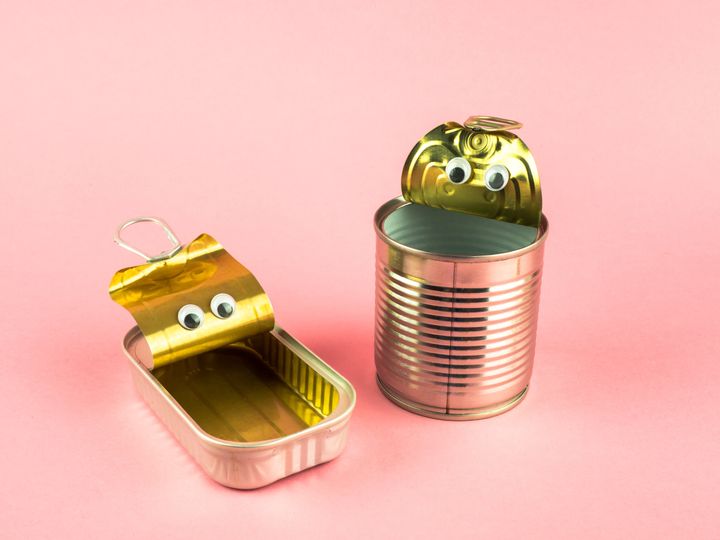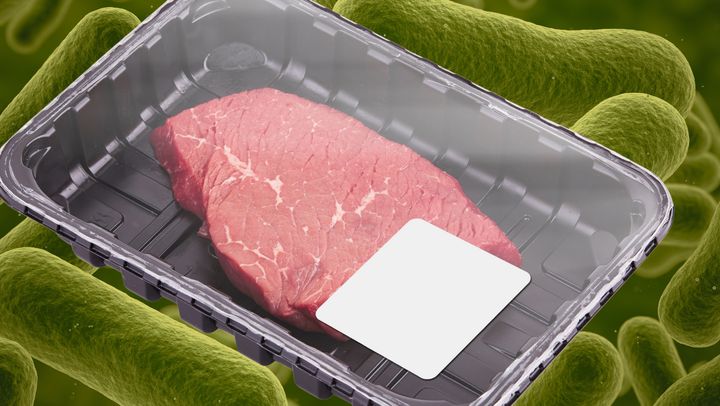
Packaging is supposed to keep our food fresh and safe, but occasionally, a the plastic film on package of chicken is domed and filled with air, or a can of beans is bulging in a way that doesn’t look quite right. It may be tempting to eat the food inside of a bulging package, but there’s reason to pause.
According to food safety experts, some bulges are harmless, but others can lead to serious illness. It’s important to know the difference and the risks.
According to Darin Detwiler, the chair of the National Environmental Health Association’s food safety program and author of “Food Safety: Past, Present, and Predictions,” examining food packaging is a key step to staying healthy. Looking at packaging to make sure it’s not bloating should be a step everyone takes before eating, similar to looking at a food’s “use by” date or smelling a food that’s been sitting around to make sure it doesn’t have a bad odor.
What causes bulging and bloated food packaging?
When packaging starts to bulge, it almost always indicates bacterial growth, said Jagdish Khubchandani, a professor of public health at New Mexico State University who specializes in food safety. The bacteria produces a gas, carbon dioxide. As the gas inside the package increases, the package expands, leading to bulging, he explained.
Less frequently, bloating can be caused by other factors. Changes in altitude may cause changes in pressure inside of packages — and this can cause bulging, Khubchandani said. If you notice that a package is bulging after a flight or you live in a high-altitude area like Denver, altitude might be the culprit. Cans that were frozen will probably bloat too, but are safe to use as long as the seams remain intact and the can hasn’t rusted, according to the United States Department of Agriculture. Bags of spinach and other leafy greens may “puff up due to the natural respiration process of the greens,” which has nothing to do with bacteria, Detwiler said.
However, it’s nearly impossible to figure out why a package is bulging just by looking at it, explains Rolando Gonzalez, a scientist who specializes in food safety and who serves as the chief scientific officer at The Acheson Group. As a result, he recommends always assuming that bacterial growth is the culprit and acting accordingly.
What happens if you eat food from bloated packaging?
If you eat food that was in packaging that is bulging, the “effect can range from no problems to a bad taste in your mouth to major health issues,” Khubchandani said.
The United States Department of Agriculture says most people who eat spoiled food won’t get sick. Khubchandani explains that “our stomach and intestines offer a lot of protection, so you can digest the germs, or our body may help excrete them by vomiting or pooping to excrete germs.”

However, not everyone who eats food from bulging packaging will get off so lightly. People may end up having excessive diarrhea and vomiting, he said. Even worse, food from bulging packages can lead to full-blown episodes of foodborne illness leading to kidney failure, cardiovascular abnormalities, paralysis and death, he emphasized.
Khubchandani cautions against taking a chance with your health, no matter how much you are craving what’s inside a bloated package. The Centers for Disease Control estimates that every year more than 100,000 people are sent to the hospital related to foodborne illnesses. Over 3,000 of them will die.
Although you may be fine if you eat some questionable food, “it is a matter of chance,” Khubchandani said, and it’s important to know the risks. Detwiler concurs, adding “If in doubt, throw it out.”
Special Considerations
Because of the way they are packaged, some foods require special attention.
In some cases, that’s because a bulging bag is rarely a sign of a serious problem. Chip bags “are intentionally designed to puff because they are filled with air,” Khubchandani said. Moreover, chips have “a lower probability of microbial growth and gas production” than other foods so there is less of a chance you will get sick if you eat chips out of a bag that had been bulging.
Conversely, “It is imperative to examine all canned food for signs of bulging, leaks or rust, as these can be entry points or indicators of bacterial growth and toxin production,” which can be fatal, Detwiler said. Bulging in canned food “is a significant warning sign” that botulinum could be present, he explained.
Botulism “is particularly concerning because it can lead a potentially fatal illness.” He explains that symptoms of botulism include “double vision, difficulty swallowing, muscle weakness, and respiratory failure.”
While any bulging packaging could indicate the presence of botulism, “risk is particularly pronounced in low-acid foods stored in oxygen-free environments, like canned goods,” he explained. As a result, Detwiler recommends inspecting canned goods especially carefully. “Inspection should not be cursory but thorough, ensuring the integrity of the can from top to bottom and side to side,” he said. If a can is bulging, even slightly, it should be discarded, Detwiler said.